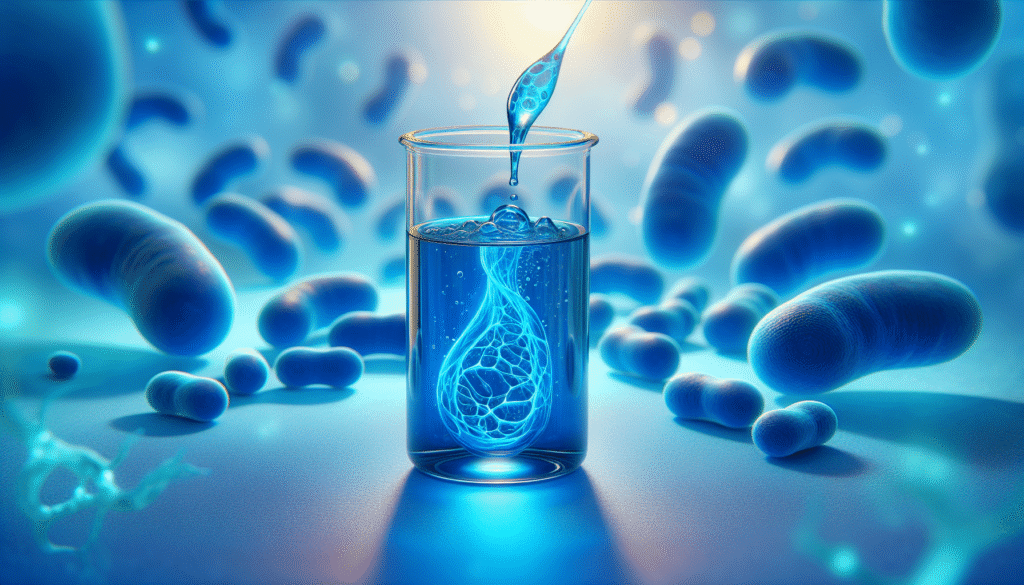
What if there was a compound known for its therapeutic properties, capable of enhancing the very energy systems within your cells? Methylene blue, once merely a dye, has emerged as a fascinating subject in the field of biomedical research, particularly for its ability to support mitochondrial function. Understanding its mechanisms and potential benefits can significantly inform your approach to health and wellness.

Understanding Mitochondrial Function
Mitochondria, often referred to as the powerhouses of the cell, play a vital role in energy metabolism. These organelles are responsible for producing adenosine triphosphate (ATP), which serves as the primary energy currency of the cell. Your body’s ability to perform essential functions depends heavily on efficient mitochondrial function.
The Role of ATP in Cellular Processes
ATP is crucial for various cellular processes, including muscle contraction, nerve impulse propagation, and biosynthetic reactions. Without adequate ATP production, your tissues may experience fatigue, reduced performance, and even cellular death. Hence, optimizing mitochondrial function is paramount in maintaining overall health.
Factors Affecting Mitochondrial Function
Mitochondrial dysfunction can occur due to a variety of factors, including:
- Aging: Natural aging processes lead to decreased mitochondrial biogenesis and increased oxidative stress.
- Nutritional Deficiencies: Lack of essential nutrients impairs energy production.
- Environmental Toxins: Exposure to toxins can damage mitochondrial membranes and impair function.
- Chronic Diseases: Conditions like diabetes and cardiovascular diseases can disrupt normal mitochondrial activity.
Addressing these factors, thereby enhancing mitochondrial function, becomes crucial for vitality.
Introduction to Methylene Blue
Methylene blue, a synthetic dye first used to treat malaria, has garnered attention for its potential benefits in cellular energy metabolism. Its unique properties make it a compound of interest in medical research, especially regarding mitochondrial function.
Historical Context
Initially discovered in the late 19th century, methylene blue served primarily as a staining agent and treatment for malaria. Over the years, various studies have illuminated its broader applications, particularly in potentiating mitochondrial functions while mitigating the effects of oxidative stress.
Mechanisms of Action
Understanding how methylene blue enhances mitochondrial function requires exploring its mechanisms of action.
Enhancing Electron Transport Chain Activity
Methylene blue acts as an electron carrier in the mitochondrial electron transport chain (ETC). By shuttling electrons, it can bypass dysfunctional components of the ETC, promoting more efficient ATP production.
Table: Methylene Blue’s Role in the Electron Transport Chain
| Mechanism | Description |
|---|---|
| Electron Shuttling | Methylene blue transfers electrons, facilitating ATP synthesis. |
| Bypass Dysfunctional Complexes | It circumvents impaired sections of the ETC, enhancing efficiency. |
| Reduction of Reactive Oxygen Species | By playing a role in redox cycling, it can help decrease free radical formation and oxidative stress. |
Reducing Oxidative Stress
Methylene blue exhibits antioxidant properties, facilitating the reduction of reactive oxygen species (ROS) within the cell. Reduced oxidative stress improves mitochondrial health and enhances overall cellular function.
Promoting Mitochondrial Biogenesis
Research suggests that methylene blue may stimulate the production of new mitochondria within cells through a process known as mitochondrial biogenesis. This is crucial for maintaining energy homeostasis, especially in aging populations.
Clinical Applications
Methylene blue’s potential extends into a range of clinical applications due to its role in supporting mitochondrial function.
Neuroprotective Effects
Studies have indicated that methylene blue may possess neuroprotective properties, making it pertinent for neurodegenerative diseases such as Alzheimer’s and Parkinson’s. By enhancing mitochondrial function, this compound could mitigate neuronal damage and preserve cognitive function.
Cardiovascular Health
Research reveals a potential role for methylene blue in improving cardiovascular health. By enhancing mitochondrial function in cardiac cells, it may help in managing conditions like heart failure, where energy production is severely compromised.
Metabolic Disorders
Given its impact on energy metabolism, methylene blue shows promise in treating metabolic disorders such as obesity and diabetes. Various animal studies have indicated that methylene blue might help regulate glucose metabolism and enhance energy expenditure.

Safety and Side Effects
While methylene blue presents exciting therapeutic possibilities, understanding its safety profile is essential.
Common Side Effects
Although generally considered safe when used in appropriate doses, methylene blue may induce side effects like:
- Urine Discoloration: A harmless consequence, methylene blue can turn urine a blue or greenish color.
- Gastrointestinal Distress: Some users may experience nausea or abdominal discomfort.
- Allergic Reactions: Rare instances of allergic reactions or hypersensitivity may occur.
Contraindications and Warnings
Methylene blue must be used cautiously in certain populations. Individuals taking serotonergic medications, such as select serotonin reuptake inhibitors (SSRIs), should avoid methylene blue due to the risk of serotonin syndrome.
Dosage and Administration
Determining the appropriate dosage is critical for maximizing the benefits of methylene blue while minimizing adverse effects.
Recommended Dosage
While there is no universally established dosage for general health purposes, studies have utilized various dosing protocols ranging from 0.5 mg/kg to 4 mg/kg, depending on the clinical indication. Consulting with a healthcare professional before initiating treatment is advisable, particularly for off-label use.
Routes of Administration
Methylene blue can be administered through different routes, including:
- Intravenous (IV): Commonly used in clinical settings for specific treatments.
- Oral: Available in tablet form for easier administration but may require careful dosage adjustments.
Future Research Directions
The potential of methylene blue extends far beyond its current applications. Ongoing research is necessary to unravel its full range of benefits, dosage guidelines, and safety parameters.
Investigating Long-term Effects
Longitudinal studies examining the long-term administration of methylene blue will provide critical insights into its safety and efficacy, providing clarity for both practitioners and patients.
Expanding Applications
Future research could explore methylene blue’s applications across various health domains, including longevity, athletic performance, and chronic disease prevention.
Conclusion
Incorporating methylene blue into discussions about mitochondrial function presents an innovative approach to health enhancement. Its ability to bolster ATP production, reduce oxidative stress, and promote mitochondrial biogenesis marks it as a compound worthy of attention in the realms of medicine and wellness. You stand to benefit greatly from understanding its mechanisms and applications. As ongoing research continues to unfold, the potential for methylene blue to revolutionize certain aspects of health care may very well become a reality, inviting you to consider a future where mitochondrial function is at the forefront of maintaining vitality.
Incorporating this knowledge into your health journey can empower you to make informed decisions, improve your overall wellness, and possibly harness the benefits of this remarkable compound.